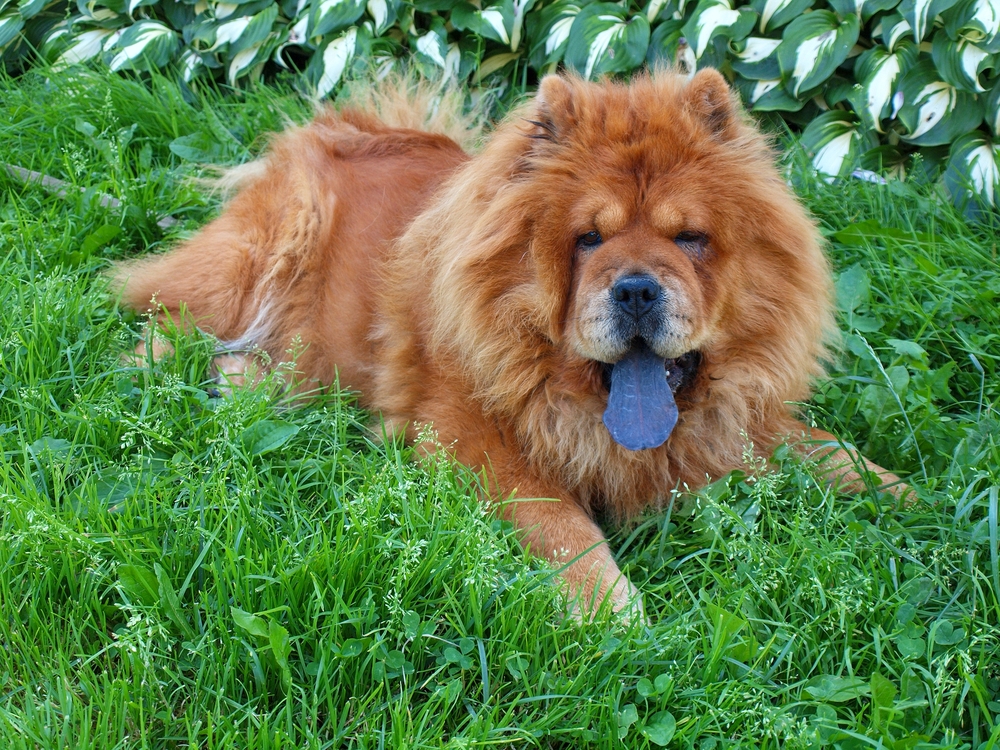You may have heard that some pets have unusual tongue colors. So, what dog breed has a blue tongue? Well, the American Kennel Club (AKC) recognizes over 200 different dog breeds. Of these, we’ve identified 20 breeds with blue somewhere on their tongues, but only four of those have true blue or blue-black tongues, meaning the other 16 breeds on this list may have similarly colored spots. Interestingly, some lizards, giraffes, and polar bears also have blue tongues.

How Are Dogs Classified?
The canine classifications may provide some genetic insights into the blue-tongue trait. The AKC categorizes dogs into 7 groups based on these relationships, which often go hand in hand with the breed’s historic use. Selectively breeding would artificially boost the occurrence of specific traits necessary for their jobs or desirable for their appearance that could explain the incidence of completely or partially blue tongues. The organization’s classification is as follows:
- Sporting
- Hound
- Working
- Terrier
- Toy
- Non-sporting
- Herding

The 20 Dog Breeds With All-Blue or Blue-Spotted Tongues
1. Chinese Shar-Pei
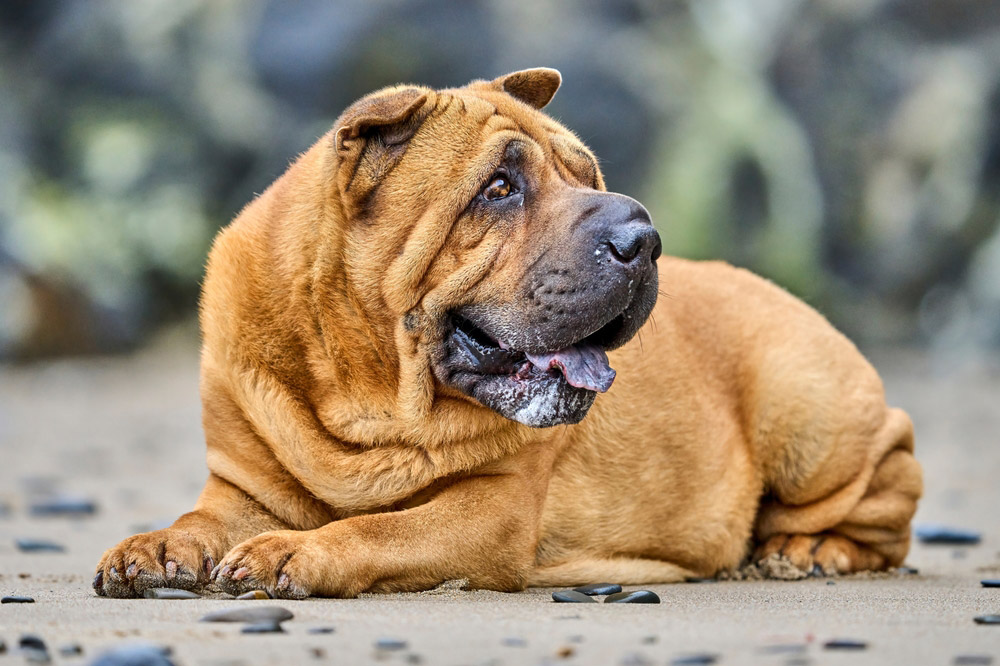
| Origin: | China |
| Group: | Non-sporting |
| All blue or spots?: | All blue |
The Chinese Shar-pei is the first breed on our list with an all-blue tongue, which is an expected trait of this breed. Pink spots or overall color are a fault or disqualification according to AKC standards. The dog’s hard, short coat is another notable feature to say nothing of the animal’s wrinkly skin. This pup’s appearance begs to be noticed, even though they can be somewhat aloof.
2. Chow Chow
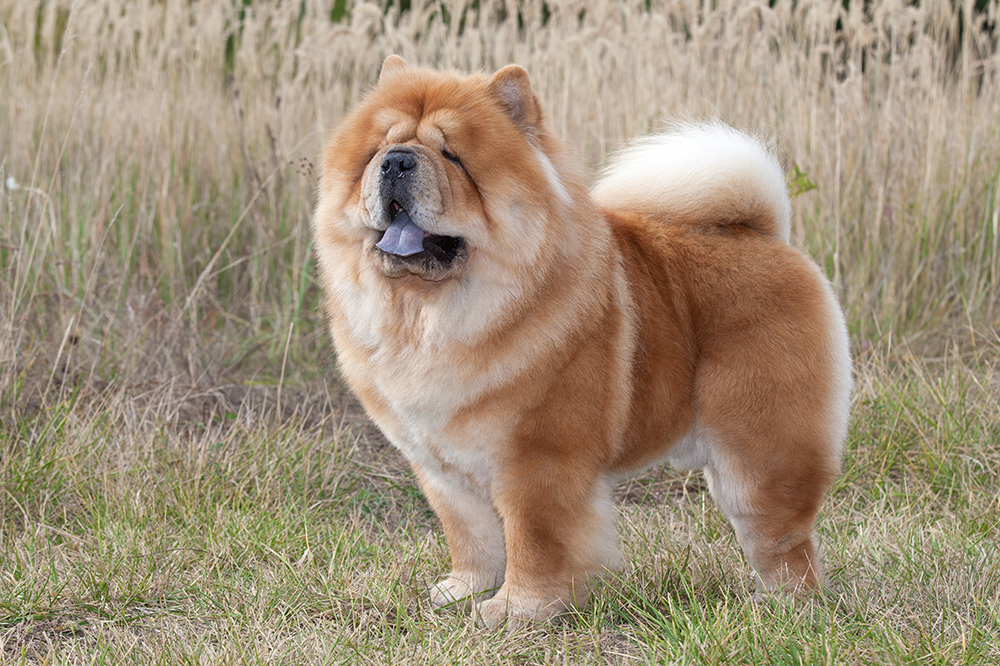
| Origin: | China |
| Group: | Non-sporting |
| All blue or spots?: | All blue |
You probably first think of the Chow Chow when considering dogs with a blue tongue. According to the official standard, this trait is so critical to the breed’s conformation that the presence of pink or red spots is a disqualifying fault. The Chow Chow Club relates a story of the dog following God as He painted the sky blue and licked a few drops of the precious liquid.1 The rest, as they say, is history.
3. Eurasier
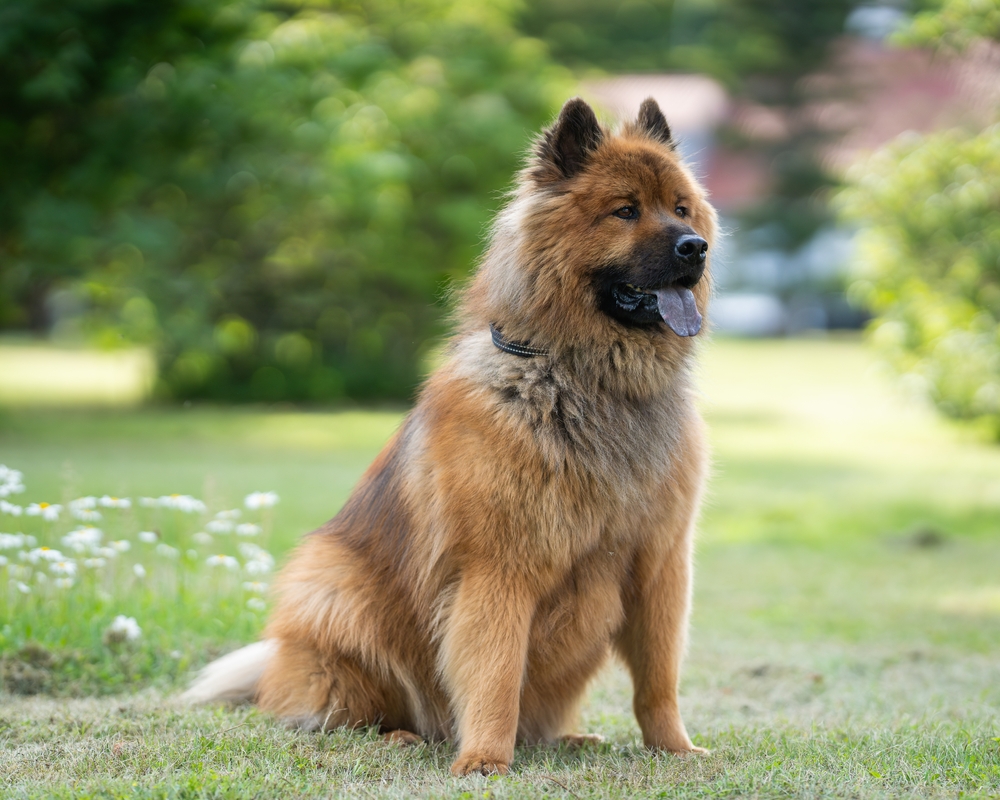
| Origin: | Germany |
| Group: | Foundation Stock Program |
| All blue or spots?: | All blue or spotted |
If you think the Eurasier looks like a Samoyed, you’re right. This dog is a modern-day breed, starting with a cross of the Wolfspitz and Chow Chow that was later selectively bred with the Samoyed by Julius Wipfel of Germany.2 The breed’s name reflects its diverse origin. It is part of the American Kennel Club (AKC) Foundation Stock Program (FSP) on the path to becoming officially recognized.
4. Thai Ridgeback
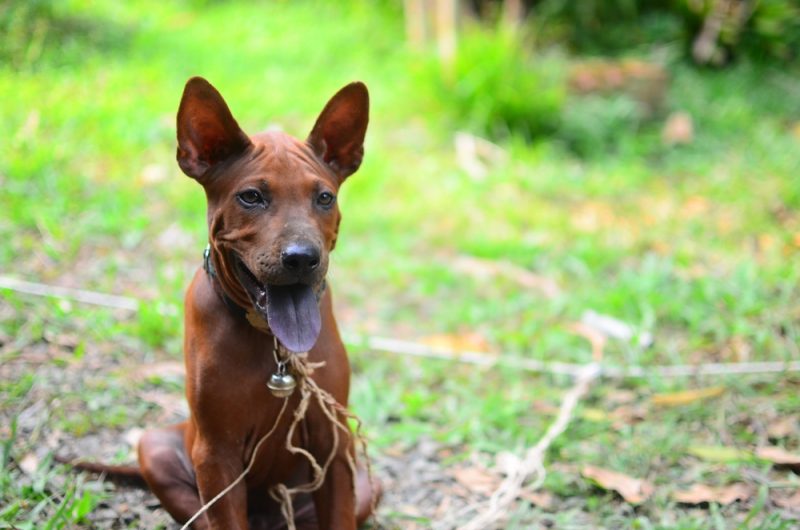
| Origin: | Thailand |
| Group: | Foundation Stock Program |
| All blue or spots?: | All blue or spotted |
The Thai Ridgeback is another FSP breed. This dog served many purposes, from hunting companion to guardian to watchdog. One must-have trait includes the all-blue or spotted blue tongue, making them the final dog with an all-blue tongue on this list. The Thai Ridgeback is a short-haired breed much like the Rhodesian Ridgeback, with many of the same characteristic physical features.
5. Akita
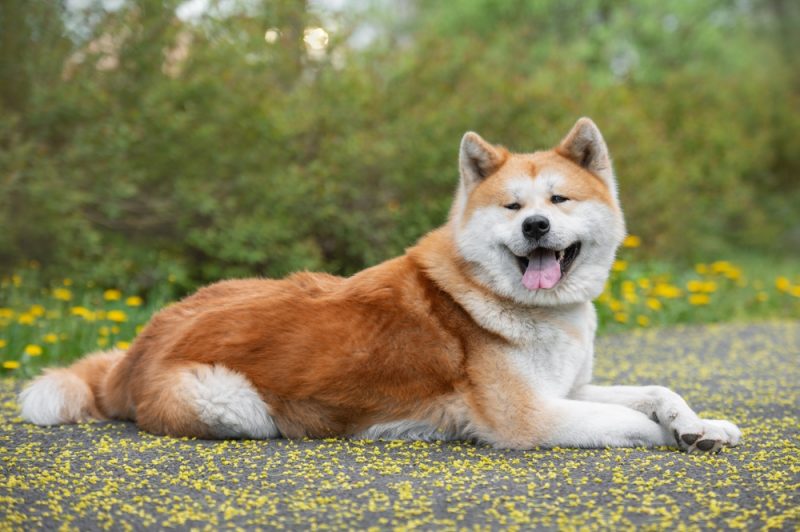
| Origin: | Japan |
| Group: | Working |
| All blue or spots?: | Spots |
The Akita is related to other breeds on our list, including the Chow Chow and Chinese Shar-pei, although they are further down the genetic line. That can help explain the presence of blue spots on the animal’s tongue. However, the official standard doesn’t address nor fault it. It’s one of many unique characteristics that exist within the breed’s history and bloodline.
6. Alaskan Malamute
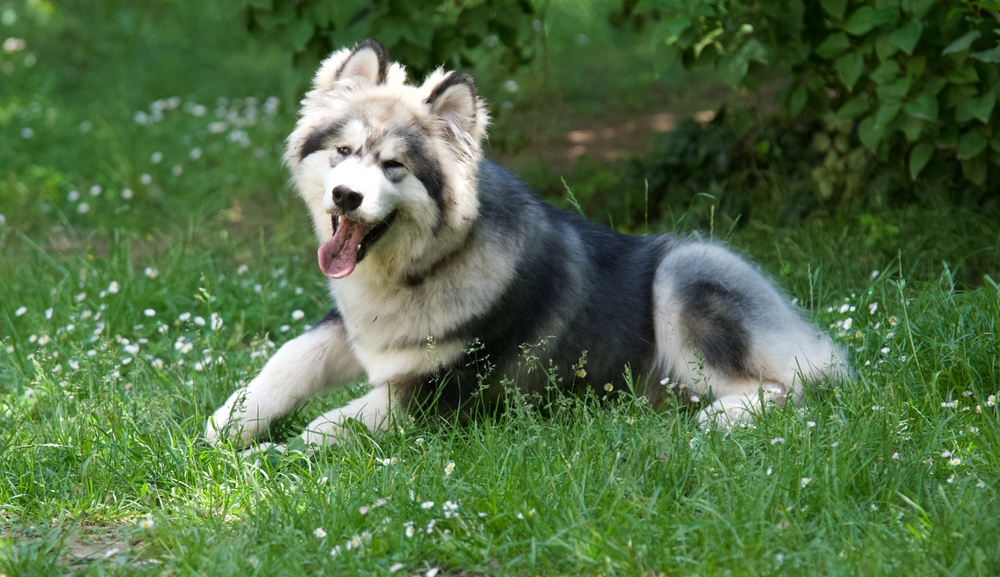
| Origin: | Northwestern Alaska |
| Group: | Working |
| All blue or spots?: | Spots |
The Alaskan Malamute and its ancestors have ancient roots linking this breed to other dogs, such as the Chinese Shar-pei and Chow Chow, who are known for their blue tongues. This dog gets occasional spots because of their genetic heritage. But while they can have blue spots on their tongues, blue eyes are a disqualification, according to the official standard.
7. American Eskimo Dog
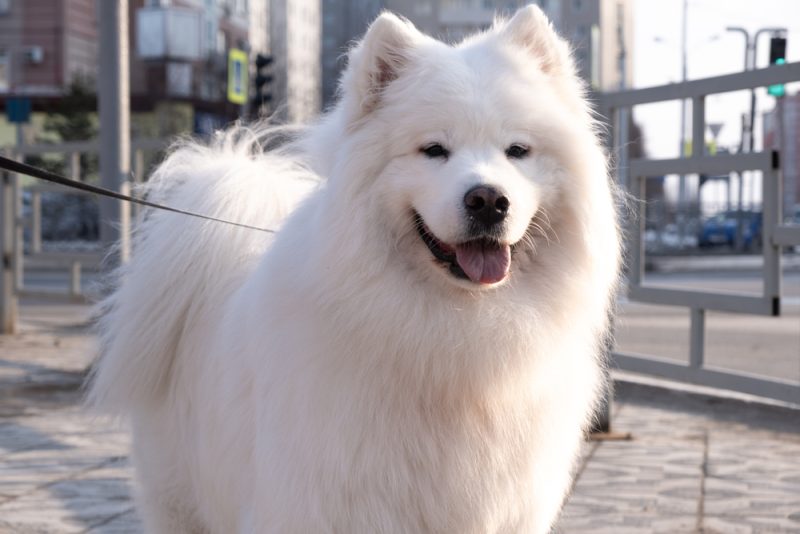
| Origin: | Germany |
| Group: | Non-sporting |
| All blue or spots?: | Spots |
The American Eskimo Dog is a modern reincarnation of the German Spitz, thus explaining the pup’s appearance and prevalence of blue spots on the animal’s tongue. This breed is also related to another one on our list: the Pomeranian. The name change came to distance the dog from their European roots during World War I. At the end of the day, though, this dog can do it all, from livestock guardian to circus performer.
8. English Cocker Spaniel
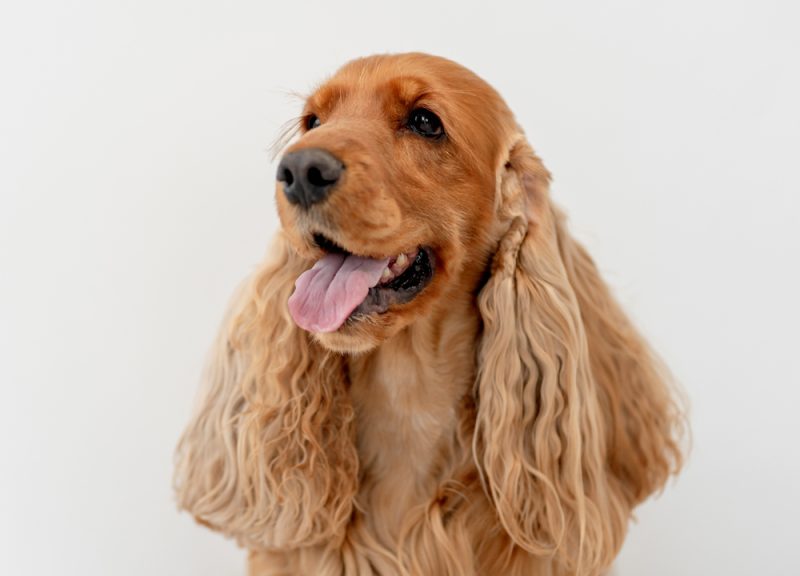
| Origin: | England |
| Group: | Sporting |
| All blue or spots?: | Spots |
The English Cocker Spaniel is an energetic sporting dog anyone would love to have on their team. The reason for the blue spots is unknown, although we can speculate that developing the animal’s endurance for sport might explain crossing with other working or sporting breeds. This dog has retained these physical traits, unlike their American cousin, who serves as a companion animal instead of a hunter.
9. Finnish Spitz
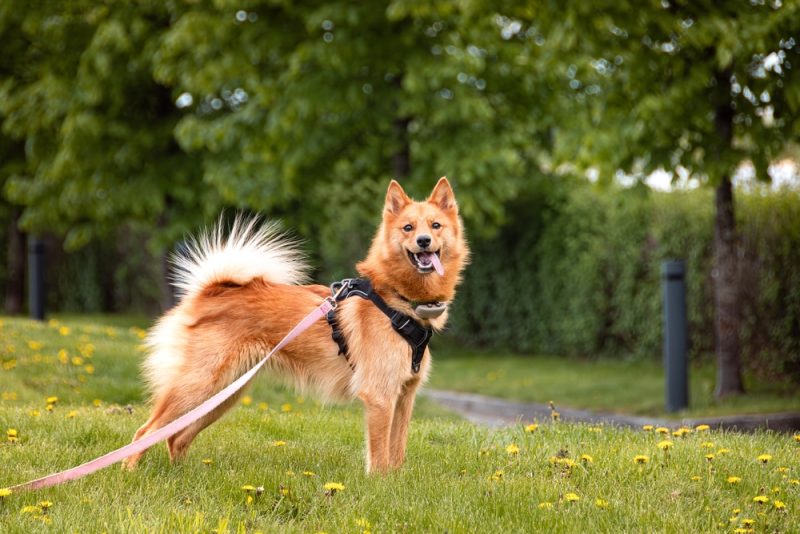
| Origin: | Finland |
| Group: | Non-sporting |
| All blue or spots?: | Spots |
The Finnish Spitz originates from ancient European dogs, presumably from Central Russia. That fact may contribute to the presence of the blue tongue in this breed. This breed’s looks belie their courageous and feisty personality. They have the temperament to match their bark. That makes them somewhat of a departure from this group, which is known to vocalize only to alert.
10. German Shepherd Dog
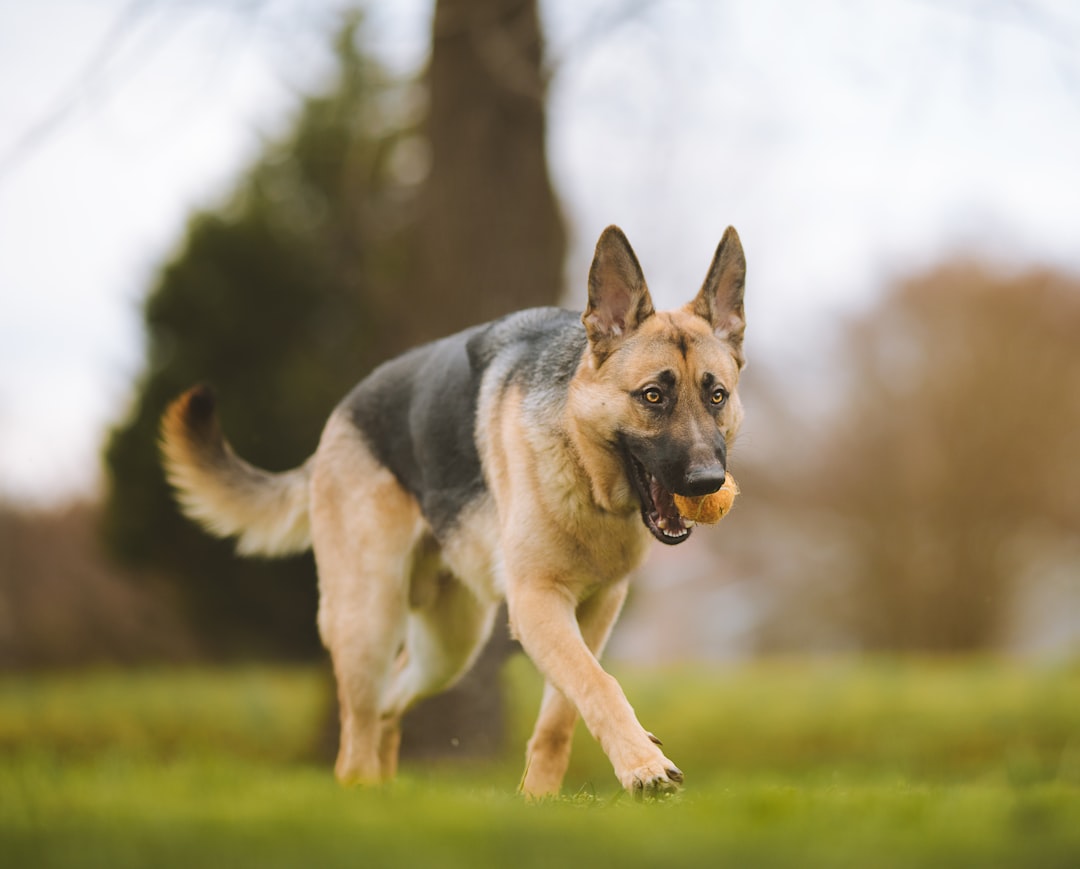
| Origin: | Germany |
| Group: | Herding |
| All blue or spots?: | Spots |
The German Shepherd Dog may seem like an odd entry on this list until you consider how the breed’s history crossed with the Akita during World War I. The former was the preferred choice for the military, so Akitas were crossed with German Shepherds to bump the Shepherd’s popularity as a military dog.
11. Icelandic Sheepdog
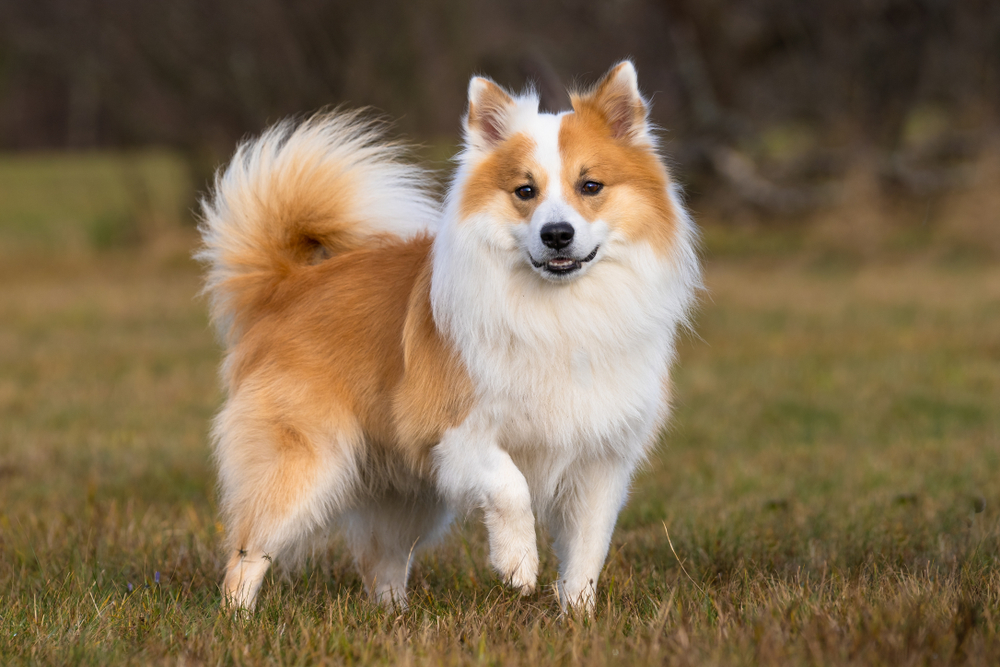
| Origin: | Iceland |
| Group: | Herding |
| All blue or spots?: | Spots |
The Icelandic Sheepdog shares many traits with spitz-like dogs. This pup is affectionate with their family but always alert for threats. Their herding instinct comes into play with their child-friendly nature. It’s also evident in the dog’s need for mental stimulation because of the animal’s intelligence.
12. Keeshond
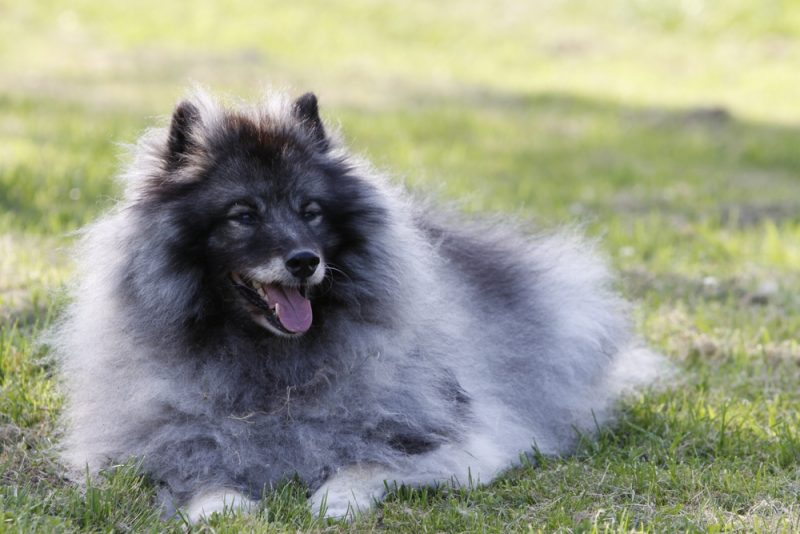
| Origin: | The Netherlands |
| Group: | Non-sporting |
| All blue or spots?: | Spots |
The Keeshond’s history revolved around water when these pups sailed the seas as guardians. The dog’s affectionate and outgoing nature made them ideal companions. The breed is one of a few seen as a political symbol around the time of the French Revolution. Enthusiasts further developed the breed in England with influences from other dogs. The Germans knew this pup as the Wolfspitz.
13. Labrador Retriever
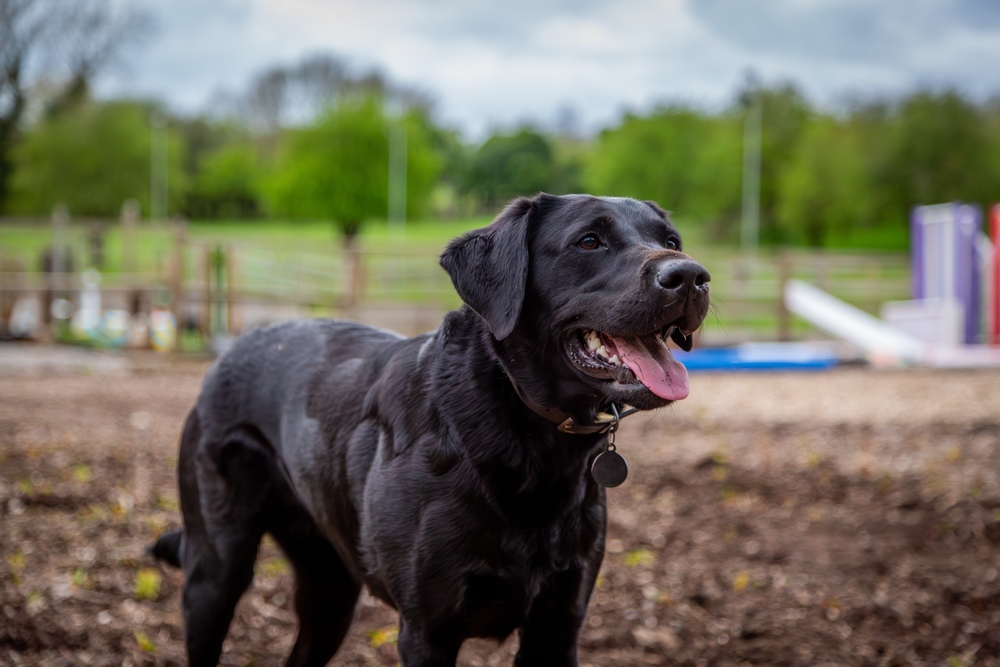
| Origin: | Newfoundland |
| Group: | Sporting |
| All blue or spots?: | Spots |
The Newfoundland origin of the Labrador Retriever may have led to ancestry common with other Arctic breeds. However, it isn’t an ancient breed, with a history only going back to the early 19th century. You may see blue coloration on other parts of this dog’s body. Interestingly, the official standard disqualifies a pink nose, with no mention of the tongue being a fault.
14. English Mastiff
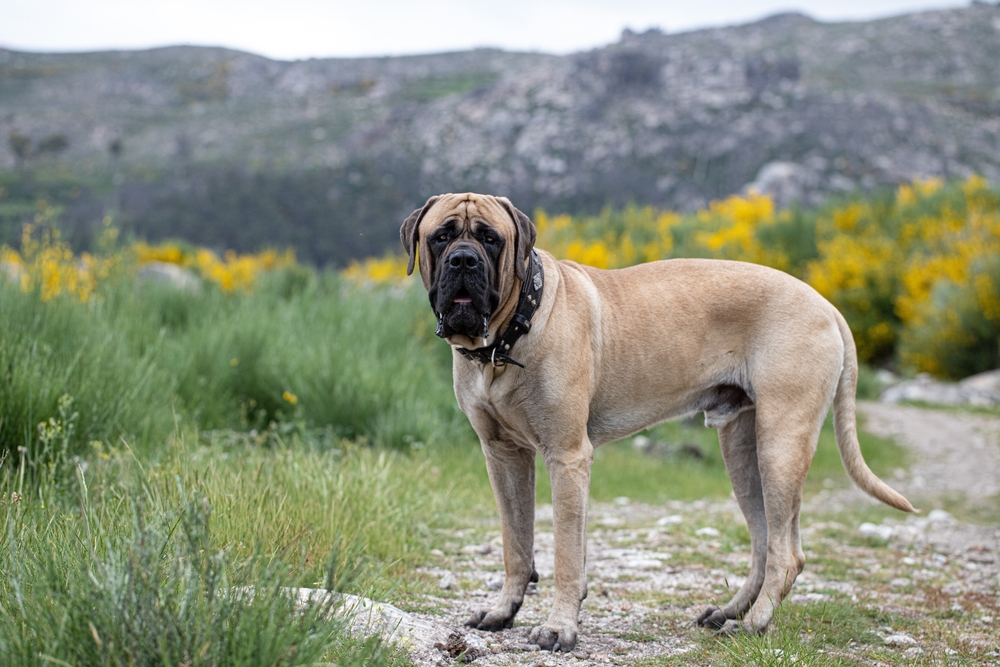
| Origin: | England |
| Group: | Working |
| All blue or spots?: | Spots |
These pups have had jobs to match their massive size as guardians and big-game hunters. However, they tend to truly be gentle giants, being affectionate with their families, although they aren’t as open with strangers.
15. Newfoundland
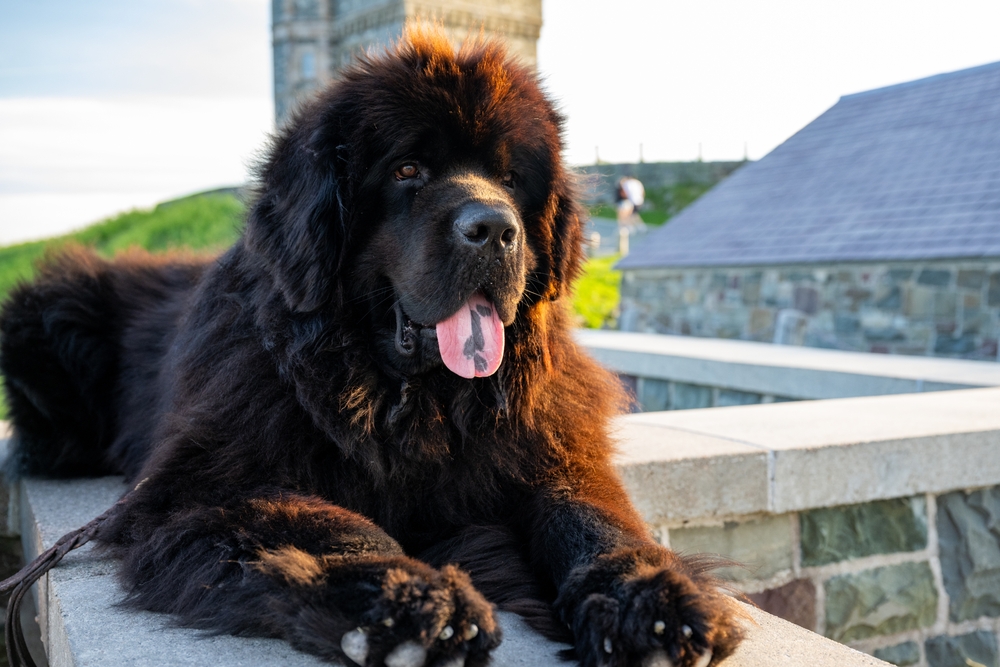
| Origin: | Newfoundland |
| Group: | Working |
| All blue or spots?: | Spots |
The Newfoundland is a hard-working dog that loves the water. While Canadian, this breed played a vital role in American history as part of the Lewis and Clark expedition. Despite the island’s relative isolation, this dog has European influences from the Vikings. This pup is well-adapted to harsh climates, and they make gentle and devoted pets.
16. Norwegian Elkhound
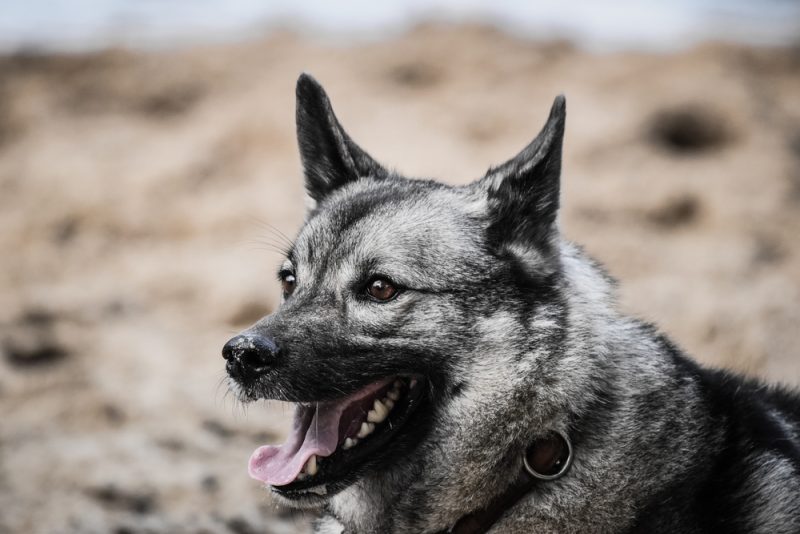
| Origin: | Norway |
| Group: | Hound |
| All blue or spots?: | Spots |
The Norwegian Elkhound’s history includes many jobs, such as hunting companion and herder. This pup is well-adapted to the environmental demands with their spitz-like traits. These dogs accompanied their owners, going after the upland game of their namesake. Their ancient history and ancestry with spitz-like breeds account for the appearance of the occasional blue spots.
17. Pomeranian
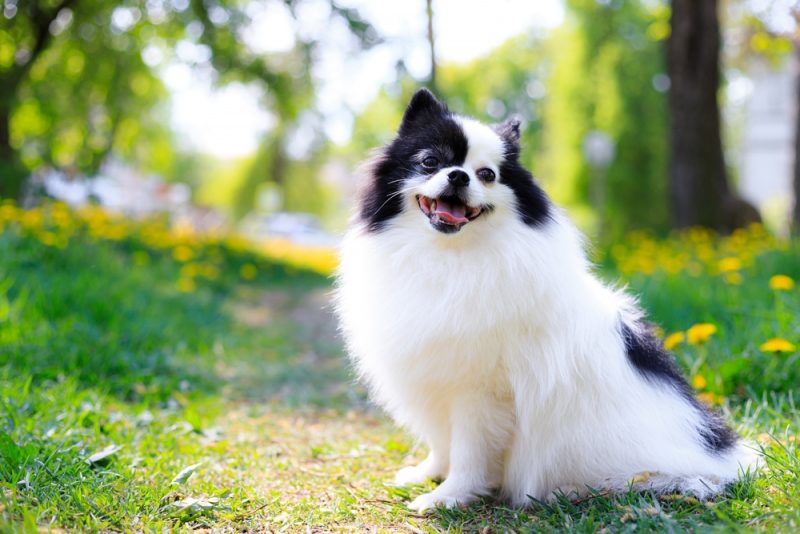
| Origin: | Northeastern Europe |
| Group: | Toy |
| All blue or spots?: | Spots |
The Pomeranian may not seem like your average spitz-like dog. However, people originally selectively bred these canines as small animal companions from larger ancestors. Even though they are considered companions, the breed retains many traits you find in this lineage despite their size. That includes their spotted tongue and feisty temperament.
18. Samoyed
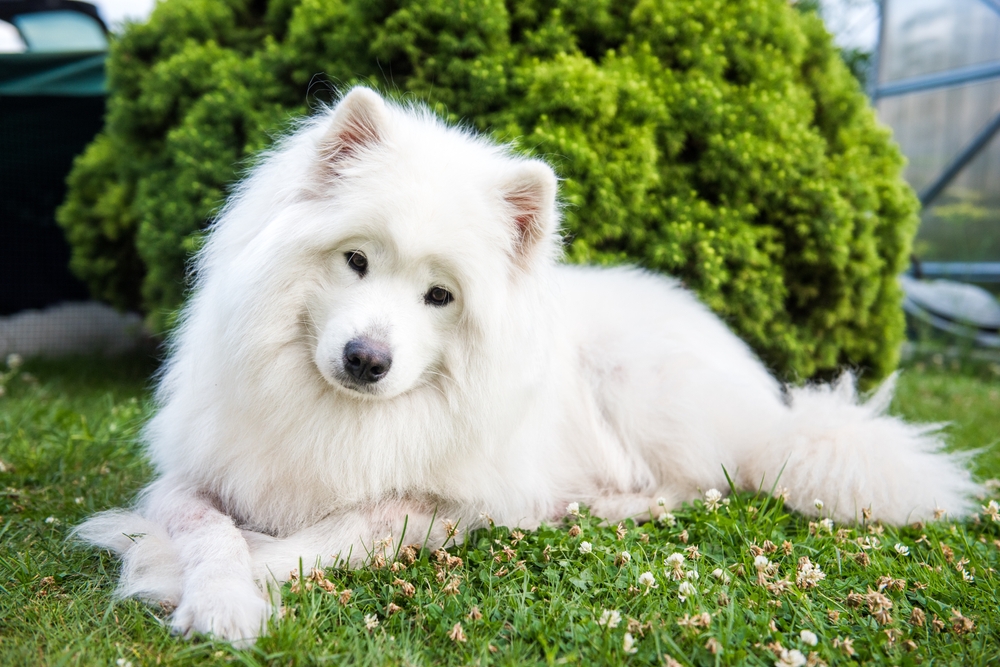
| Origin: | Siberia |
| Group: | Working |
| All blue or spots?: | Spots |
The spitz history of the Samoyed shows up occasionally as spotted tongues. This pup has the same adaptability to temperature extremes that are evident in many of the spitz-like dogs. You may think they were pampered because of their beauty. However, Samoyeds are hard-working animals working as sled dogs, hunting companions, and livestock guardians.
19. Shiba Inu
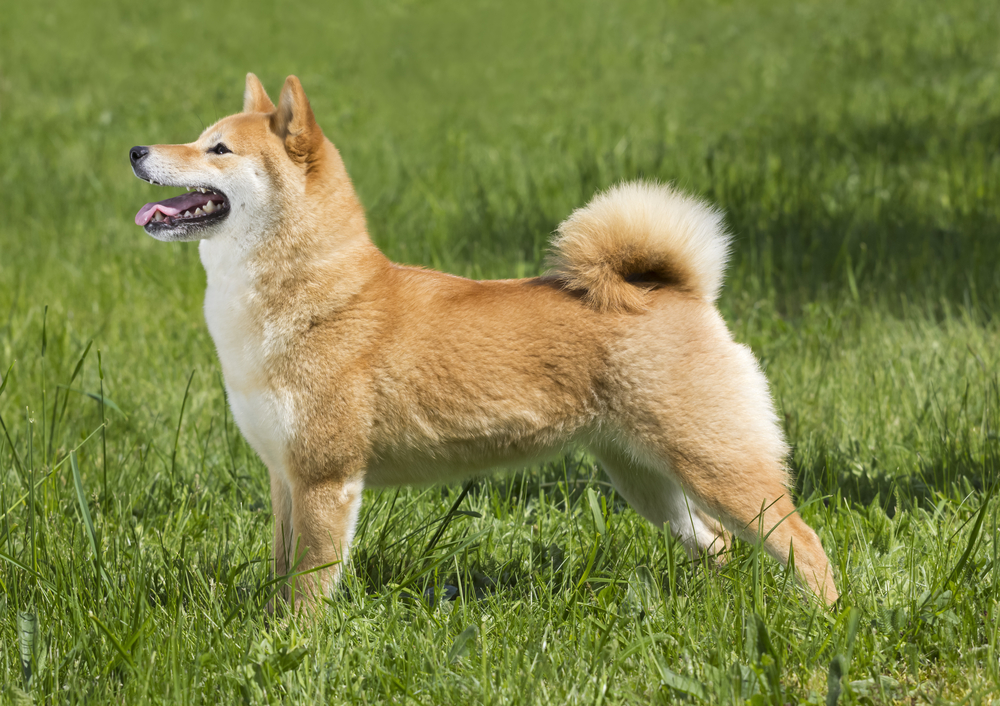
| Origin: | Japan |
| Group: | Non-sporting |
| All blue or spots?: | Spots |
Don’t let the small size of the Shiba Inu fool you. This pup is a survivor. People even used them as hunting companions. While relatively new to the United States, it’s an ancient breed with a history going back thousands of years. This dog is the smallest of Japan’s native breeds, but their bigger cousin is the Akita, which is where they likely get the spotted tongue from.
20. Siberian Husky
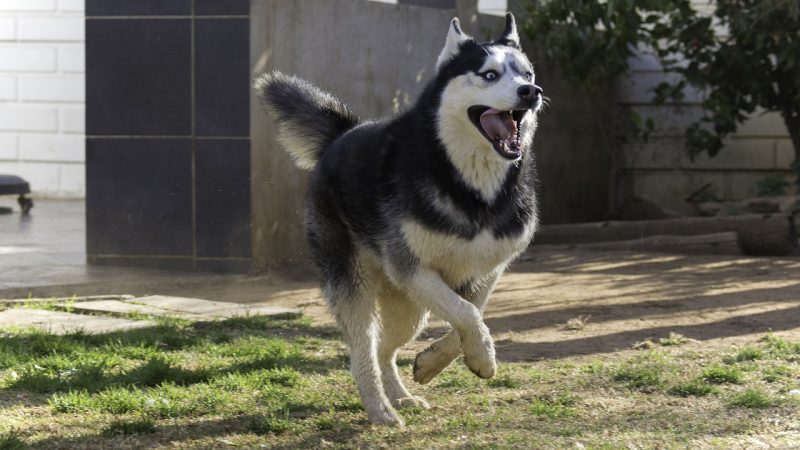
| Origin: | Siberia |
| Group: | Working |
| All blue or spots?: | Spots |
You probably can’t find a more energetic and happier dog than the Siberian Husky. This pooch has been an animal companion and a sled dog with the temperament to match. Their devotion was on full display with the famous serum run to Nome, Alaska, in 1925. The lead sled dog, Balto, led their team to the town when a diphtheria epidemic raged. The spitz-like traits explain the blue spots.

The Reasons for the Blue Tongue
Researchers have studied the Chow Chow intensively for this trait. Scientists have identified four possible locations where canine domestication may have originated, including Europe, Central Asia, the Middle East, and East Asia. That can explain the commonality of blue tongues among related breeds from specific hotspots. The folklore is evidence of its desirability, even if it might not be beneficial.
Researchers have identified two genes that may account for this trait. They could be examples of piggyback mutations with the encouragement of heart and muscle development of the breed. People used Chow Chows for hunting, making these wanted characteristics.

1. Pigmentation
Many breeds in which a spotted tongue occurs may simply be due to over-pigmentation that happens spontaneously. Other evidence exists in dogs with blue blotches on their bellies or the roofs of their mouths. The pups on our round-up also included breeds with pigmented fur, which can account for these color variations. The lack of a genetic component explains their seemingly random appearance.
2. Rare Blue Tongue Virus
We discovered another version of blue tongue in a breed that is not on our list. One case report details the presentation of a known viral ruminant disease in a pregnant Rottweiler. The dog presented with signs of labored breathing, low blood oxygen, and loss of appetite. The animal’s blue tongue wasn’t a genetic mutation or inheritance pattern; instead, it was visible evidence of the complications of the disease.
The rarity of this case warranted further investigation. The researchers learned the dog was a livestock guardian dog for a flock of sheep in which an outbreak of blue tongue virus had occurred. The scientists posited the Rottweiler’s role put the animal in direct contact with the affected livestock, accounting for the disease.
3. Cause for Alarm
The sudden occurrence of a blue tongue can be a sign of toxicosis from an encounter with the poisonous Colorado River Toad (Incilius alvarius) or Marine Toad (Rhinella marina). Ingestion of the pesticide metaldehyde may also cause cyanosis or blue skin, including the tongue. These dogs will likely be in respiratory distress and require immediate veterinary care. Any other cause of respiratory distress, including a respiratory infection or choke, may also lead to a blue-colored tongue.

Conclusion
Scientists may not know why exactly some dogs have blue tongues, but there are theories. Genetics are clearly the reason for its existence, nurtured by selective breeding. Regardless of whether your dog was born with blue on their tongue or not, they all make wonderful pets for the right owner regardless of what colors reside in their mouths.
Featured Image Credit: Bokstaz, Shutterstock
